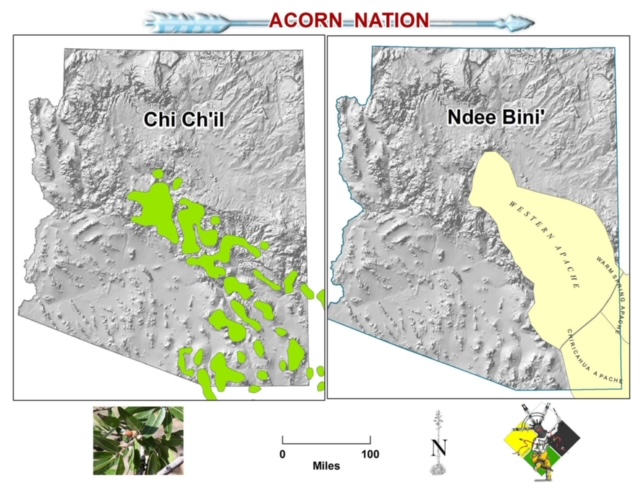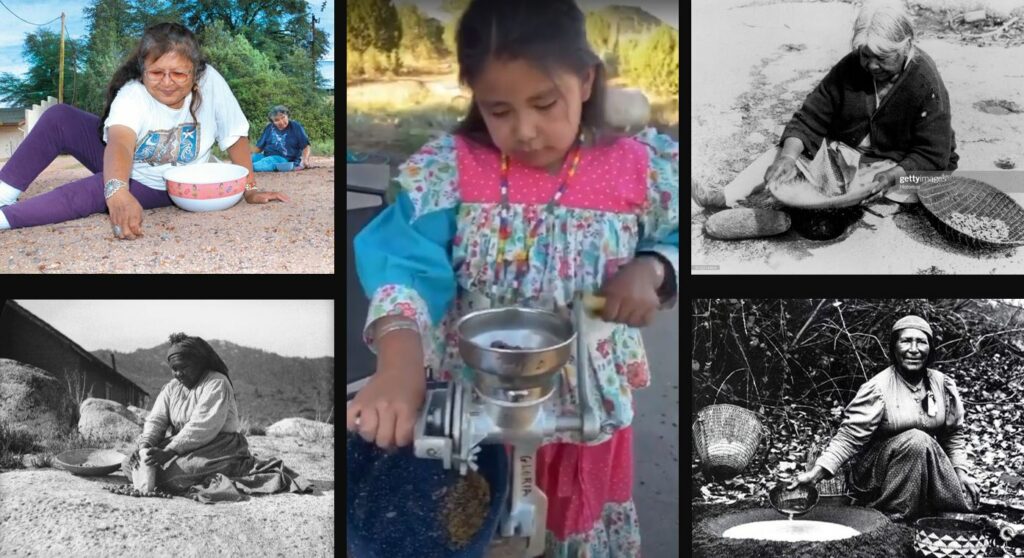Blog post by Jason Inskeep
As a person who claims to love exploring cultures, traveling, and trying different foods, I failed. I recently realized that as a Native Arizonan I had only tried one food from my home state’s Indigenous culinary tradition—Fry Bread. I am not alone. In a state with twenty-two reservations, it is shocking that there are few commercial “Native American” restaurants. Of the two recommended by Visit Arizona, the “official” Office of Tourism, one is in a casino and the other is in a museum courtyard. By cooking and analyzing a traditional Apache Acorn Soup recipe, I learned that the acorn offers a great perspective on the importance of Indigenous sustainable living traditions and that culinary disregard toward Indigenous cuisines is still happening today.

Sustainability
Be aware, finding acorns is a difficult task. Most people that live in an area with acorns throw them away. Luckily, I was given acorn meal by a member of the White Mountain Apache tribe for this recipe, not realizing how special it is in their culture. Twila Cassadore, a member of the San Carlos Tribe, emailed me that members hesitate when asked for acorns as they are “respected more than money.” My work was easy; I cooked beef for hours in water, salt, and pepper until it fell apart, shredding it and stirring in the acorn meal and stock from the pot. The smell and taste of the acorn were unique, somehow woodsy and vanilla-like at the same time. I recommend trying it. The Apache’s respect for something as small as the acorn, through sustainable traditions and practices over hundreds of years, exemplifies their love and appreciation for what nature provided in their lands. The “Acorn Nation” map below illustrates this. Unfortunately, their ecologically balanced traditions and practices instead benefited the invading Europeans. The successful Indigenous stewardship of the past resulted in desirable land that was slowly taken away. This is evident based on the significantly reduced size of their lands today, per the “Tribal Homelands in Arizona” map below.

Embedded Culinary Disregard
While reading the acorn soup recipe, I innocently thought, “what a simple recipe,” disregarding the tradition of the recipe and the large amount of labor in preparing acorn meal. The gathering, deshelling, soaking, and grinding of the acorn is difficult. This relates to food studies such as Rebecca Earle’s Body of the Conquistador which traced embedded “vernacular humoralism” in the modern-day Americas to the Iberian conquistadors.[i] When Iberians first came to the Americas in the fifteenth and sixteenth centuries, they judged the Indigenous diets as “bestial” compared to the Mediterranean diet they grew up with. Owing to the medical belief of the four humors, newly arrived Iberians thought that unfamiliar foods, such as the acorn, would alter their humors (internal makeup), and potentially make them more like Amerindians, who were stereotyped as docile, inefficient, and unproductive.[ii] Rejecting indigenous foods was a common practice, though over time foods like chocolate, potatoes, tomatoes, and others became widespread in Europe and beyond. While society today may not purposefully ignore or disregard Indigenous foods, the lack of “Native American” restaurants as a commercial endeavor in a capitalistic society demonstrates that Indigenous tribes are seemingly alone in embracing their culinary heritage.

[i] Rebecca Earle, The Body of the Conquistador: Food, Race, and the Colonial Experience in Spanish America, 1492-1700 (Cambridge: Cambridge University Press, 2012), 219.
[ii] Earle, 19.
Jason Inskeep is a masters student in the History M.A. program at Arizona State University.



